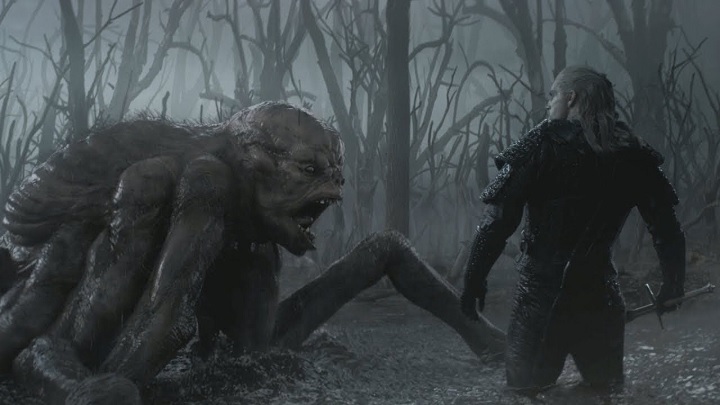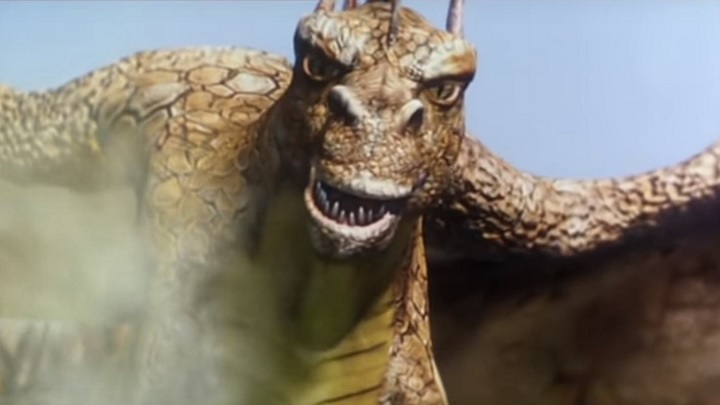The Witcher Going on Strong; Netflix Discusses the Bestiary
An extensive video was uploaded, in which Netflix analyzes the bestiary of the first season of The Witcher. We can not only take a close look at the Striga, the Kikimore or the Doppler, but also find out where the inspiration for bringing them to life came from.
- A video, which presents the monsters that appeared in the first season of The Witcher and discusses the genesis of each of them, has appeared on the web;
- Four days after its release, the film has already been watched by more than 381,000 viewers, which, combined with 25,000 thumbs up, shows an unwaning interest in the franchise.
Netflix has prepared a video, in which the bestiary of the first season of The Witcher series is discussed. The twelve-minute video can be found below, enabling us not only to take a closer look at the monsters and other fantastic creatures that Henry Cavill's Geralt of Rivia has been dealing with so far, but also to learn the origin of each of them. Interestingly, although it is safe to assume that most of those interested have already seen the first season of Netflix's The Witcher, the video has gained over 381,000 views in less than four days (making it one of the most popular videos on Netflix's youtube channel) and 25,000 thumbs up. This shows that the interest in the franchise is still not waning, and its fans are eager to find any news about the series.
Before we begin the screening, it is important to keep in mind that we are dealing with a big spoiler here; additionally, the individual monstrosities are presented in the order in which they appear in the series. So if the first season is still before us and we don't want to spoil ourselves the fun, beware.
Let us move on to a short discussion of the monstrosities presented by the artists. The first monster presented in the above material is the Kikimore, whose prototype from Slavic mythology is known today as a wraith haunting people in their sleep. The second place on the list is occupied by silvan, whose roots can be found in the hybrids of humans and animals present in almost every mythology of the world; a curious fact is that even in 19th century England there was still a belief in the existence of women with a pig's head. Then there is the Striga, pulled pretty much entirely from Slavic folklore and being a kind of "prototype" of later vampires. The Selkiemore in turn... well, she was somewhat mistreated by the creators of the show. However, its prototype can be found in creatures from Scottish folklore known as selkie, who spent most of their lives as... seals, but could turn into people.

As for the Krallach, a giant insect reminiscent of a grasshopper - although there are no traces of beliefs in giant insects in ancient Europe, Asian myths and folklore of Native Americans are full of such creatures. The roots of dopplers, i.e. creatures capable of copying not only the appearance, but also the mind of any humanoid, can be found both in the mythology of ancient Egypt and in the beliefs of the inhabitants of the Orkneys, who were afraid of the so-called Trows (or Drows) able to switch human children with identical replicas created by themselves. The last place on the list is occupied by the Djinn, inspired mainly by creatures of the same name from Arabic folklore.

- The Witcher on Netflix
- The Witcher Netflix Series Season 1 Review - Netflix Delivered!
- The Witcher (Netflix) - Ton of Info on Season 2
0

Author: Christian Pieniazek
Started working with Gamepressure.com in August 2016. Although the Game Encyclopedia has been his pride and joy from the beginning, he also writes for the Newsroom and the Editorial section. Gained professional experience through a now-defunct service, in which he worked for almost three years. Graduated in Cultural Studies at the AGH University of Krakow. Runs his own business, jogs, cycles, loves mountain hiking, is a fan of nu metal, is interested in space, and of course, enjoys playing games. Feels best in action games with an open world and RPGs, although won't turn down good racing or shooting games.
Latest News
- End of remote work and 60 hours a week. Demo of Naughty Dog's new game was born amid a crunch atmosphere
- She's the new Lara Croft, but she still lives in fear. Trauma after Perfect Dark changed the actress' approach to the industry
- „A lot has become lost in translation.” Swen Vincke suggests that the scandal surrounding Divinity is a big misunderstanding
- Stuck in development limbo for years, ARK 2 is now planned for 2028
- Few people know about it, but it's an RPG mixing Dark Souls and NieR that has received excellent reviews on Steam, and its first DLC will be released soon

